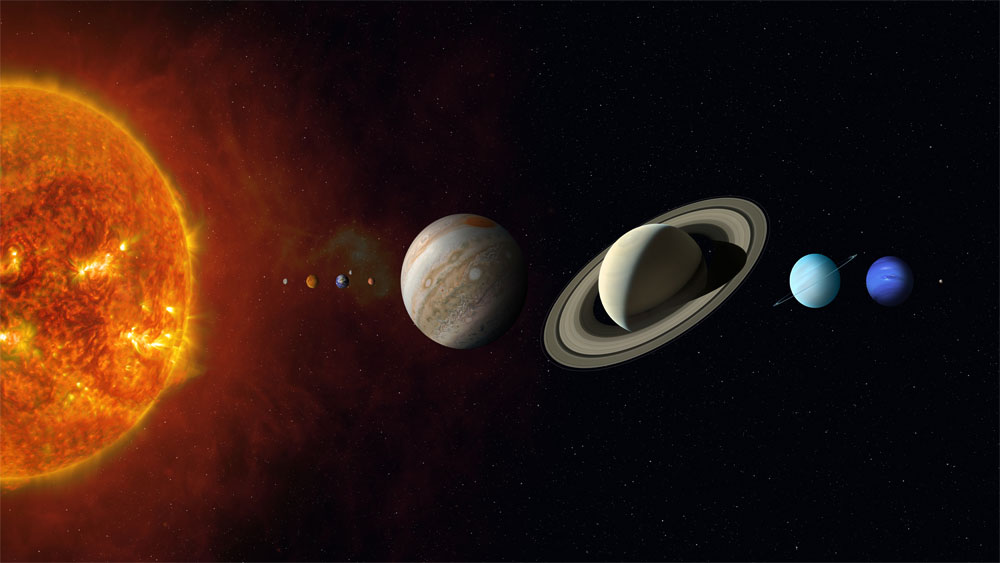Most all school children can recite the planets in our solar system using memory devices such as: “My Very Easy Method Just Speeds Up Names” or “My Very Educated Mother Just Served Us Noodles” (Pluto may be added at the end of each mnemonic).
In researching our solar system, Copernicus (1473-1543) determined that our sun was near the center of our solar system, rather than the Earth itself. Johannes Kepler (1571-1630), implementing his laws of planetary motion, correctly described the orbits of the planets as elliptical paths around the Sun. Fifty years later, another creation scientist, Sir Isaac Newton (1642-1726), used his laws of motion and universal gravitation to explain why these orbits were elliptical.
Newton is credited with saying, “Atheism is so senseless. When I look at the solar system, I see the earth at the right distance from the sun to receive the proper amounts of heat and light. This did not happen by chance.” He also stated, “This most beautiful system of the sun, planets, and comets, could only proceed from the counsel and dominion of an intelligent and powerful Being.”
A recent article regarding the “remarkable stability of the orbits of the inner planets” was reported in Physical Review X.1 But according to physical models, they should be in a chaotic mess.
Earth probably shouldn't exist. That's because the orbits of the inner solar system planets—Mercury, Venus, Earth and Mars—are chaotic, and models have suggested that these inner planets should have crashed into each other by now. And yet, that hasn't happened.2
The reason, of course, is because ‘this most beautiful system’ was designed by the Creator, the Lord Jesus Christ, in a very intricate manner.
Planets constantly exert a mutual gravitational pull on each other—and these little tugs constantly make minor adjustments to the planets' orbits. The outer planets, which are much larger, are more resistant to little tugs and so maintain comparatively stable orbits. The problem of inner planet trajectories, however, is still too complicated to solve exactly.2
If and when these sophisticated planet trajectories are finally solved, they will reveal unparalleled complexity. The Livescience article can only speak of “the apparent harmony in our solar system.”2 Apparent? The harmony is real!
In the 21st century, scientists see our solar system and its formation as being quite unique: “In a stunning surprise, almost all the newly discovered solar systems look very different from our own.”3 This has severely disrupted their attempts to explain our solar system apart from supernatural creation. See below:
Observers in any field of science take a peculiar pleasure in seeing their theorist colleagues collapse into sobbing heaps, but it happens with unnerving regularity with exoplanets. Modelers have consistently failed to predict the diversity of planetary systems out there.4
In addition, our solar system is designed in such a way that life on Earth would flourish, “The question about what exactly makes it [Earth] so special that it harbors life is still a good question.”5 Indeed, the surface of our planet being covered with 73% life-giving water is—according to evolutionists—unusual: “According to [secular] models of Solar System formation, Earth, as an inner Solar System planet, should have little to no water.”6
Jesus Christ is the Creator of space, time, energy, and life. He alone designed and built our solar system, the Milky Way Galaxy, and the universe. He alone deserves the glory.
Yours is the day, yours also the night; you have established the heavenly lights and the sun.7
References
- Mogavero, F. et al. 2023. Timescales of chaos in the inner Solar System: Lyapunov spectrum and quasi-integrals of motion. Physical Review X.
- Demming, A. Scientists discover secret 'symmetries' that protect Earth from the chaos of space. Livescience. Posted on livescience.com May 11, 2023, accessed April 26, 2023.
- Szostak, J. How did life begin? Scientific American blog. Posted on scientificamerican.com June 1, 2018, accessed May 15, 2023.
- Musser, G. Why don’t exoplanets match astronomers’ expectations? A dispatch from the American Astronomical Society meeting. Scientific American blog. Posted on scientificamerican.com January 13, 2011, accessed May 15, 2023.
- Science Writer. The solar system follows the galactic standard—but it is a rare breed. Phys.org. Posted on phys.org November 30, 2020, accessed May 15, 2023.
- Peslier, A. 2020. The Origins of Water. Science 369.
- Psalm 74:16
* Dr. Sherwin is science news writer at the Institute for Creation Research. He earned an M.A. in zoology from the University of Northern Colorado and received an Honorary Doctorate of Science from Pensacola Christian College.



















